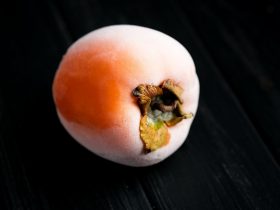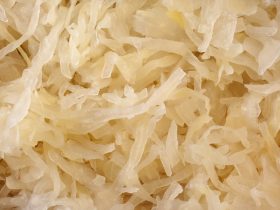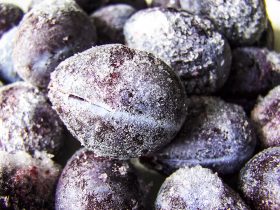In the culinary sector, clams are the colloquial term for several different species of mollusks with an edible inner flesh1. Unlike oysters and mussels, most species of edible clams are found half-buried along the seafloor and do not require salt-water to survive.
It is because of this ease at which clams are grown that they are often sold in large quantities, and, by extension, cooked in large quantities. Like all seafood, when large amounts are cooked, it is important to store them in order to prevent potentially deadly food poisoning.
Clams may be frozen quite easily. Being seafood, freezing is one of the few ways to present the near-immediate colonization of the clams by microbes. Stored in a freezer at an approximate temperature below 32°F, clams will last for up to three months. This applies to both shelled and shucked clams.
How to Freeze Clams
The second longest-lasting storage method for clams, choosing to freeze your clams will require a few extra steps than simply chucking them in the freezer.
Keep in mind that in order to freeze your clams, they must first be shucked and cooked. This step is taken to ensure that not only will thawing them affect the texture in a less impactful way but to also kill any potentially deadly bacteria that may be present within the shells.
To begin, you must first prepare the following equipment; an oyster shucking knife or similar implement, a source of running water, a stir-fry pan or other cooking vessel of your choice, a resealable plastic pouch as well as a freezer capable of reaching temperatures at least as low as 32°F.
First, shuck your clams as carefully as possible. Owing to the particular shape of oysters, it is not uncommon for home chefs to injure themselves while doing this.

Once freed of their shells, gently rinse the oyster flesh in order to remove any sand or dirt that may still be clinging to the surface. As you are doing this, preheat your frying pan or whatever cooking implement you have chosen.
Place the cleaned clams in the pan alongside oil or butter at a low heat. Allow to simmer until fully cooked. If so desired, one may add seasoning, though it is important not to add any ingredients that will cause the clams to spoil more quickly.
Cut the heat and remove the pan from the stove. Taking your resealable freezer pouch, pour the cooked clams and their constituent oil or butter into the bag. It is important to allow the clams and the oil to cool first before doing this, since the high heat may melt through the freezer bag or otherwise cause steam condensation inside.
Leave approximately an inch of open air between the clams and the top of the freezer bag. This is done to account for the expansion of liquids when subjected to freezing temperatures, which may rupture the bag from within.
Leave the clams in the freezer for up to three months.
Will Freezing Clams Affect Their Quality?
Yes, the freezing of clams will affect their structure at the cellular level, altering their texture and taste in unpredictable ways.
However, if stored properly and cooked prior to freezing, this particular side-effect of freezing will be minimized.
How Long Do Canned Clams Last?
If, instead, you have chosen to forgo purchasing freshly caught clams, their shucked and canned form can provide a more than ample substitute.
Because of the rigorous sterilization techniques and various additives that are added to keep the clam shelf-stable for an extended period of time, it is difficult for home cooks to replicate the exact length of time canned clams may stay edible.
As such, should you need to have a readily available supply of clams for the next several years, canned clams are your only viable option.
Though it depends on the exact preservatives used, most canned clams will remain safe to eat for as long as five years, so long as the can is not compromised in any way.
How Long Do Clams Last at Room Temperature?
In all organic food, temperature is a constant factor that needs to be controlled in order to prevent bacterial and fungal growth from making it inedible. According to the U.S. Department of Agriculture, the vast majority of microbes can grow the fastest at the temperatures of 40 °F – 140 °F2.
Dubbed the “danger-zone”, any food left at this temperature while exposed to the open air will eventually be compromised and become harmful to eat. Though temperature is only one such factor required to be controlled in the pursuit of long-term storage, it is also one of the most vital ones.
In the case of storing clams at room temperature, keep in mind that they will only last as long as two hours before becoming risky to consume.
It is far more advisable to either eat your clams immediately after cooking or to otherwise utilize a different storage method, as spoiled seafood can potentially contaminate other foodstuffs nearby.
How Long Do Clams Last in the Fridge?
Choosing to store clams is significantly more difficult than simply placing them in the refrigerator, owing to the fact that clams must be kept alive in order to prevent them from spoiling very quickly. This requires several steps to be taken in order to ensure that the clams do not die of exposure to the harsh environment of your refrigerator.
To begin refrigerating your clams, you will need a cloth as well as an open tray or rectangular container large enough to store all the clams horizontally.
First, run the clams beneath the tap, scrubbing the shells as lightly as possible. The clams, if still alive, will respond to this by closing their shells. If this reaction is not observed, it is best to discard the clam as it may already be expired.
After washing, place the clams in a single layer across the bottom of your tray or container. Do not stack the clams atop each other, as this will cause the clam on the bottom to suffocate.
Wet the cloth and drape it over the tops of the clams, leaving a small amount of space between the walls of the container and the cloth so as to allow airflow to continue freely.
Place the container of clams in the lowest level of your refrigerator where the humidity may reside.
Stored in this way, clams will last for as long as two days without expiring. It is still important to inspect them before consuming, however.
References
1. “Clam”. Oxford Dictionaries – Dictionary, Thesaurus, & Grammar.
2. Unknown Author. (June 2017) “”Danger Zone” (40 °F – 140 °F)” United States Department of Agriculture Food Safety and Inspection Service https://www.fsis.usda.gov/food-safety/safe-food-handling-and-preparation/food-safety-basics/danger-zone-40f-140f





Hi, I'm Dom
Dom Eats was started to help other people fall in love with food. While cooking can feel intimidating, it doesn't have to be.